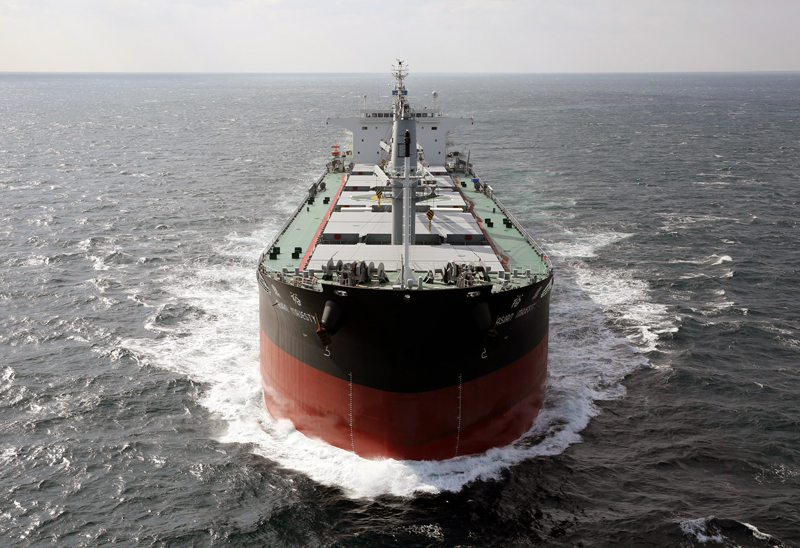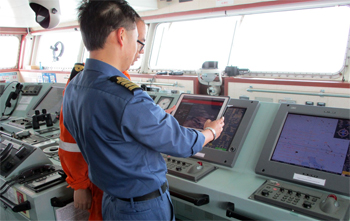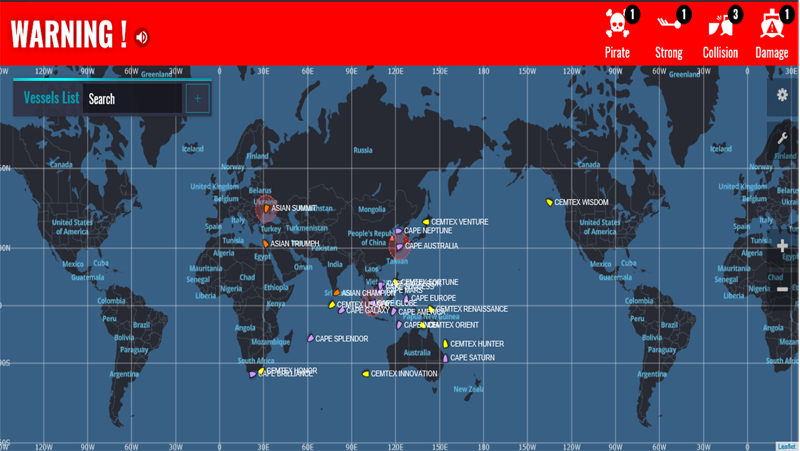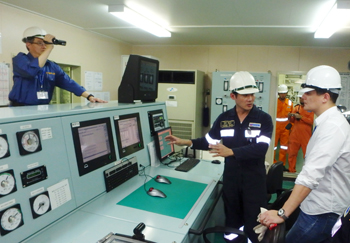02.2019 Cover Story
U-Ming Marine Transport Corp. digitalizes the fleet, setting sail intelligently.
Far Eastern Magazine / Editorial Room


Ship safety has always been one of the most important topics in shipping industry. On general roads, automobiles can be equipped with auxiliary systems such as lane deviation warning and vehicle collision warning. However, it is very difficult to maintain navigation safety for ships with huge size, no clear waterway and a distance of 180,000 miles from shore. Fortunately, U-Ming Marine Transport has introduced an innovative "Digital Fleet Safety Management System", which not only enhances navigation safety, but also brings great benefits to organizational decision-making and communication management.
Dynamic data shore-ship integration
In an era when communication technology is still underdeveloped, the shipping industry adopts an individual management model in both administration and information, and the application of science and technology is quite conservative. Taking ship information management as an example, people on board usually make Word or Excel forms by computer, which are limited by equipment and funds. They can only transmit information to company managers 2-3 times a day. However, managers who receive information, although everyone has a computer, also use manual login to make statistics, without any function of automatic processing statistical analysis, which results in high management costs. However, it is difficult to achieve "shore-ship integration" because of its poor efficiency. Nowadays, with the development of Internet and satellite communication technology, the information of shore ships can be shared synchronously, and the management departments on shore can directly grasp the ship's dynamics, which makes the remote management and control of ships more efficient.

In order to achieve the digital management of modern ships, U-Ming Marine Transport and Ericsson, the telecommunications equipment brand, jointly used Big Data, Internet of things (IoT) and digital platform technology in 2015 to build the first set of Connected Vessels services and develop Fleet Safety Management (FSM) which is a leading industry. The information needed for fleet management is transmitted back to the company through satellite network, and Big Data data is used to realize information management, supervision and control of fleet, so as to achieve the goal of "integration of shore and ship".
In data collection, U-Ming Marine Transport develops and installs data integration system of electronic equipment by itself, establishes ship dynamic database, and provides ship navigation data provided by navigation system on board, ship information provided by automatic identification system (AIS) and related information of other surrounding ships, signal of radar system and engine room control system through satellite. Operational data and alarms of machinery and equipment, as well as various safety equipment such as WATER INGRESS, FIRE DETECTION etc. Return the relevant data of aircraft and marine equipment to the company's control center immediately. In addition to integrating all the data, we also standardize the format of the data, pre-process it through the ship dynamic data processing system, and establish a unified dynamic database.

Big Data must be analyzed and calculated after data collection in order to produce valuable information and provide various decision-making reference materials for company managers. Therefore, U-Ming Marine Transport will send the information of ship navigation safety, energy efficiency management and administration to the subsystems of relevant applications respectively, and provide users and managers of different classes. It will use the shore information network, develop ship specifications, international conventions, system documents, fleet safety management and other systems to accomplish the synchronization of ship-shore archives information, and not only achieve information sharing. Enjoy, the company departments can also exchange views on the same digital platform, strengthen horizontal communication, effectively break the barn effect, and promote team cooperation.
Energy Efficiency Improvement of Crisis Early Warning

Behind the wisdom of the U-Ming Marine Transport fleet, besides relying on the leader's vision and introducing intelligent systems, there is also a need for on-board, in-house and computer information professionals to plan together. Among them, the crew on board must have rich experience in order to accurately provide the operation situation. The crew of the company and the IT integrator should plan the system structure according to the operation information and ship management. Finally, the computer information technology professionals should design the program. In order to meet the needs of all the crew and achieve the desired results, the crew of the company should update and modify the program continuously. However, the digital fleet safety management system is only the first step for the intellectualization of U-Ming Marine Transport. The road of innovation and transformation is endless. U-Ming Marine Transport firmly believes that only by keeping pace with the times can we lead the world.



















